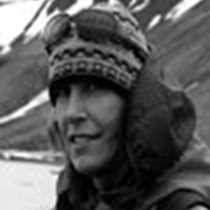Glacier Bay National Park
All of us aboard the National Geographic Sea Lion came to Glacier Bay National Park with great expectations, of course. Recognized by John Muir as the ground zero of our understanding of glacial power, iced-in only two hundred years ago when the lauded Vancouver and his crew mapped this coast, ancestral home of the Hoonah Tlingit, it’s an understatement to say that this landscape has got some stories to offer.
We picked up Helen Fields, our park ranger, in the early morning. Although guests and natural history staff were tucked into their bunks, the officers and deck crew on watch saw a moose swimming to a distant shore. We woke, therefore, to a cautionary tale: those who read, sleep, or daydream miss out. Not to worry, though. The waters and shores of the park have plenty to offer.
Our first stop was the Marble Islands. What glorious chaos! Steller sea lions lounged on the rocks in distinctive and perhaps disgruntled companionship. The eponymous calls of black-legged kittiwakes filled the air as did the staccato Morse of black oystercatchers. And the alcids! Pigeon guillemots, common murres, tufted puffins, horned puffins, marbled murrelets, and Kittlitz’s murrlets all flapped and paddled along the blue-musseled shore. What’s more, the snowy peaks of the Fairweather Mountains glinted beyond this rich hubbub. It looked as if the skies would open their cloud veils.
Glacier Bay is vast, with many inlets, nooks, and crannies to explore. Today, we dallied with a mountain goat at Gloomy Knob, marveled at rafts of surf and white-winged scoters in Russell Cut, then ducked into Johns Hopkins Inlet, a fjord closed to boats until early July when the harbor seal pupping season is over (the seals give birth on floating ice calved from the glacier). True to the promise of the morning skies, it was bright and still and blue above. We nudged our way through bergie bits and growlers to within a mile or so of the glacier face, marveling at the narrow channel, the glaciers descending from every peak, the vastness of this landscape.
One of the most dynamic glaciers in the park, Johns Hopkins Glacier today lived up to its reputation. Huge slurries of ice sluiced from its face. One of the pinnacles toppled before our eyes, and the still waters undulated with the waves from such plummetings long after the echoes of “white thunder” had faded.
Downbay, clouds had set in, but we cruised along in bright sun for a few more hours, getting a sense of this area so recently carved by ice. With the ship tied up at the dock in Bartlett Cove, we stretched our legs along the trails and byways, walking through forests only a couple of hundred years old, still in the process of becoming as complex and rich as only time allows them to be. It was a fine day. It was a big day. It was a day of experiences as dramatic as Glacier Bay itself.
All of us aboard the National Geographic Sea Lion came to Glacier Bay National Park with great expectations, of course. Recognized by John Muir as the ground zero of our understanding of glacial power, iced-in only two hundred years ago when the lauded Vancouver and his crew mapped this coast, ancestral home of the Hoonah Tlingit, it’s an understatement to say that this landscape has got some stories to offer.
We picked up Helen Fields, our park ranger, in the early morning. Although guests and natural history staff were tucked into their bunks, the officers and deck crew on watch saw a moose swimming to a distant shore. We woke, therefore, to a cautionary tale: those who read, sleep, or daydream miss out. Not to worry, though. The waters and shores of the park have plenty to offer.
Our first stop was the Marble Islands. What glorious chaos! Steller sea lions lounged on the rocks in distinctive and perhaps disgruntled companionship. The eponymous calls of black-legged kittiwakes filled the air as did the staccato Morse of black oystercatchers. And the alcids! Pigeon guillemots, common murres, tufted puffins, horned puffins, marbled murrelets, and Kittlitz’s murrlets all flapped and paddled along the blue-musseled shore. What’s more, the snowy peaks of the Fairweather Mountains glinted beyond this rich hubbub. It looked as if the skies would open their cloud veils.
Glacier Bay is vast, with many inlets, nooks, and crannies to explore. Today, we dallied with a mountain goat at Gloomy Knob, marveled at rafts of surf and white-winged scoters in Russell Cut, then ducked into Johns Hopkins Inlet, a fjord closed to boats until early July when the harbor seal pupping season is over (the seals give birth on floating ice calved from the glacier). True to the promise of the morning skies, it was bright and still and blue above. We nudged our way through bergie bits and growlers to within a mile or so of the glacier face, marveling at the narrow channel, the glaciers descending from every peak, the vastness of this landscape.
One of the most dynamic glaciers in the park, Johns Hopkins Glacier today lived up to its reputation. Huge slurries of ice sluiced from its face. One of the pinnacles toppled before our eyes, and the still waters undulated with the waves from such plummetings long after the echoes of “white thunder” had faded.
Downbay, clouds had set in, but we cruised along in bright sun for a few more hours, getting a sense of this area so recently carved by ice. With the ship tied up at the dock in Bartlett Cove, we stretched our legs along the trails and byways, walking through forests only a couple of hundred years old, still in the process of becoming as complex and rich as only time allows them to be. It was a fine day. It was a big day. It was a day of experiences as dramatic as Glacier Bay itself.




